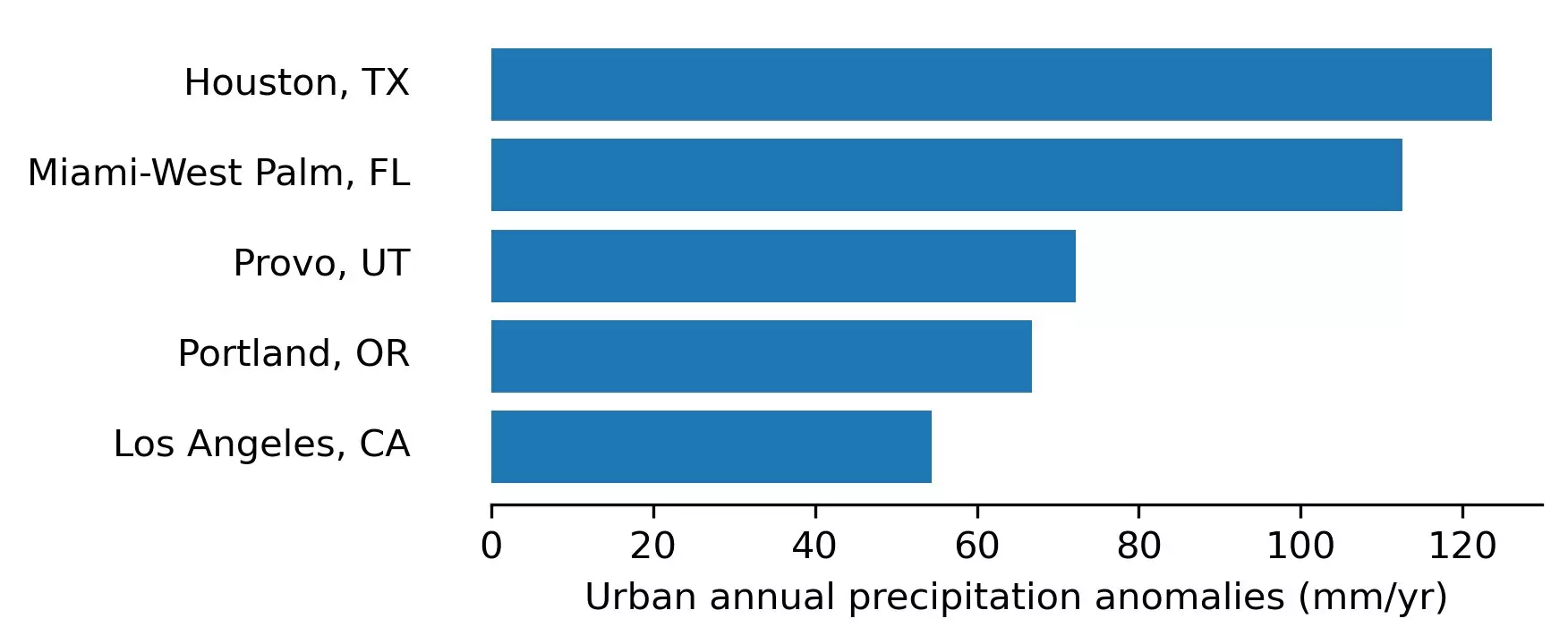Urbanization is a hallmark of contemporary society, with cities constantly expanding to accommodate growing populations. This phenomenon has been heavily studied in terms of its impact on temperature, leading to the identification of the urban heat island effect. However, an equally significant but less discussed phenomenon is the urban precipitation anomaly. This article delves into the intricacies of the urban precipitation anomaly, exploring its findings, implications, and the ongoing challenges it poses for urban areas globally.
The Urban Precipitation Anomaly Explained
The concept of the urban precipitation anomaly refers to the observable phenomenon whereby urban environments experience altered rainfall patterns compared to their rural counterparts. This deviation can be traced to various factors inherent to urban development, including infrastructure, land use, and population density. A recent study by researchers from The University of Texas at Austin examined this anomaly on a global scale, scrutinizing precipitation data from 1,056 cities between 2001 and 2020. Remarkably, the researchers found that over 60% of these urban areas receive more precipitation on average than surrounding rural regions.
The implications of these findings are profound. For instance, cities like Houston receive an average of nearly five additional inches of rainfall annually compared to their nearby rural areas. Such increases in precipitation can exacerbate existing challenges like urban flooding, leading to severe environmental and socio-economic consequences.
The Mechanisms Behind Increased Urban Rainfall
There are compelling reasons why urban areas tend to experience enhanced precipitation. According to co-author Liang Yang, the presence of tall buildings significantly influences wind patterns, slowing them down and causing air to converge around city centers. This convergence can lead to stronger upward motions of air, which prompts the condensation of water vapor into rain. The analogy of a sponge being squeezed aptly illustrates this point; while the total water mass remains constant, the localized concentration can shift, intensifying rainfall in certain areas.
Population density plays a critical role in this dynamic. The study notes a direct correlation between population size and the scale of precipitation anomalies. Larger populations contribute to taller buildings, increased heat, and more greenhouse gas emissions, creating urban “heat islands” that influence local weather patterns.
While a majority of urban areas see increased rainfall, some cities experience the opposite trend, receiving lesser amounts than their rural surroundings. This is notably the case in regions situated in basins or valleys where nearby mountain ranges dictate rainfall distribution. Cities such as Seattle, Kyoto, and Jakarta exemplify this trend. Understanding these geographical intricacies is crucial for urban planners and policymakers as they devise rainwater management strategies suitable for their specific conditions.
The findings concerning urban precipitation anomalies raise alarm bells about potential flash flooding in cities, particularly as climate change intensifies the variability of weather patterns. As urban landscapes are characterized by impermeable surfaces, such as concrete and asphalt, the capacity for ground absorption is significantly diminished, leading to unmanageable runoff during heavy rain events. This situation demands innovative approaches to urban planning and infrastructure development.
At the forefront of these strategies is the need for cities to enhance their stormwater management systems. Implementing green infrastructure—like permeable pavements, green roofs, and urban wetlands—can facilitate natural water absorption, thereby alleviating some of the flood risk. Additionally, cities may benefit from improved forecasting systems that incorporate urban precipitation anomalies into their predictive models, allowing for timely responses to impending storms.
The Importance of Continued Research
Although researchers have made significant strides in understanding urban precipitation anomalies, this area of study remains ripe for further exploration. With a landscape constantly changing due to urban expansion and climate variability, the ongoing analysis of rainfall patterns in urban environments is crucial. Comprehensive datasets, advanced modeling techniques, and interdisciplinary collaboration are paramount for accurately forecasting changes in urban precipitation and informing climate adaptation strategies effectively.
The urban precipitation anomaly represents a critical environmental and societal concern. By understanding its causes and implications, urban planners, scientists, and policymakers can work collaboratively to develop effective mitigation strategies, ultimately fostering resilient cities better equipped to confront the challenges posed by climate change and urbanization.


Leave a Reply